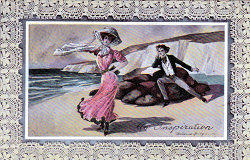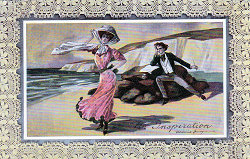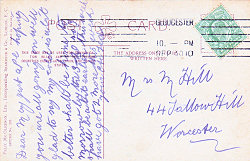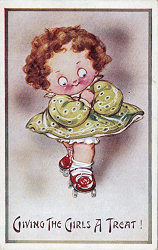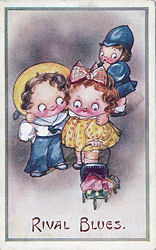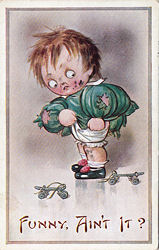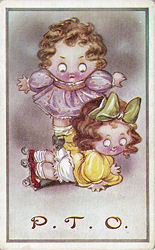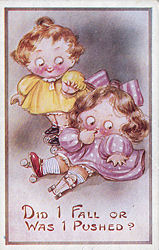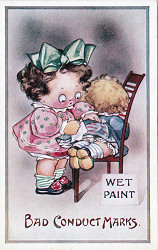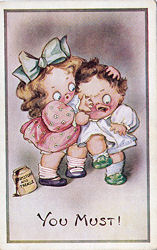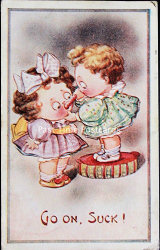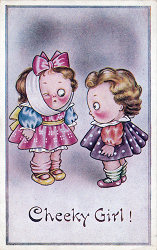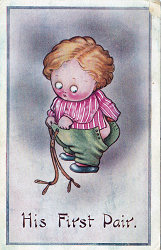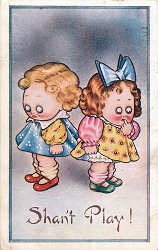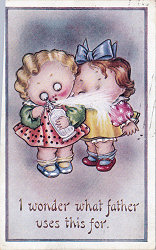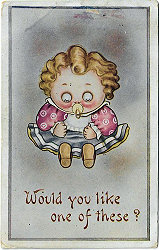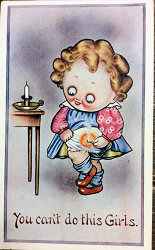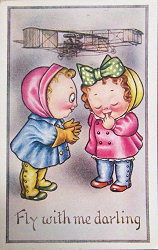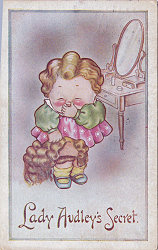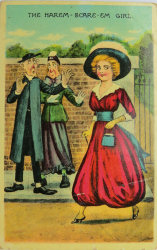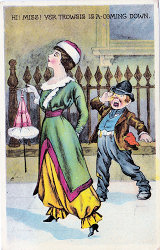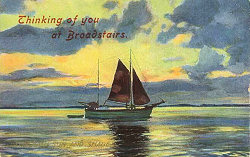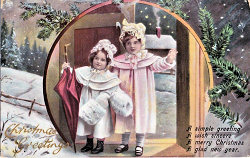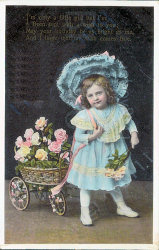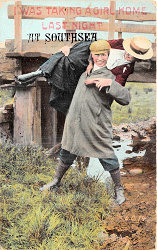|
"Felix McGlennon Ltd" "Shamrock & Co" "Humorous Art Studies" |
|
The company is of interest because it was one of the first to publish cards signed by Fred Spurgin. and because it was situated in Paternoster Row, at the heart of the London post card publishing district, where many of Fred Spurgin's cards were published. |
||||
|
"Lace-edged" Romantic Scenes by Fred Spurgin |
||||
|
An Inspiration Signed Frederick Spurgin 30 September 1910 McGlennon/Shamrock back Series 303 |
An Inspiration Signed Frederick Spurgin Series 1360 Printed in Saxony Plain back - no publisher name |
Where Ignorance is Bliss Unsigned 10 August 1910 Series 1360 Printed in Saxony Plain back - no publisher name |
||
 |
The above card has the same 1390 back and is almost certainly also by Fred Spurgn as it is in the same set and stylistically very similar.. It seems likely that these were published as a set of six. |
|||
|
|
||||||||||||||||||||||||||||
|
In the cards produced by "Fred Stone" and "F S" up to 1907 there were no post cards of individual children. After 1910 Fred Spurgin regularly produced quality cards showing children. There appears to be a series of unsigned card sets - including the Kute Kiddies series published by Inter Art andthe Infantastic Series by Watkins & Kracke and the Humorous Art Series (below). Then came signed sets in the Paternoster Series (Avenue Publishing) and then various children series published by Inter-Art. This has been considered in detail on the page Round faced children cards which argues that the following cards are by Fred Spurgin. |
||||||||||||||||||||||||||||
| Humorous Art Series attributed to Fred Spurgin | ||||||||||||||||||||||||||||
|
Giving The Girls A Treat |
Rival Blues |
Humorous Art Studies
Shamrock & Co., London, EC Humorous Art Studies Printed in England Unsigned
Presumably a set of 12 cards. |
Funny, Ain't It |
P. T. O. |
||||||||||||||||||||||||
|
I Wish I Could Talk Like Daddy |
Did I Fall or Was I Pushed March 1910 |
Bad Conduct Marks
|
You Must |
Go on, Suck! July 1910 |
||||||||||||||||||||||||
|
|
||||||||||||||||||||||||||||
|
Humorous Art Studies Series No 2 Felix McGlennon Ltd. Incorporating Shamrock & Co., London, EC Printed in England Unsigned |
||||||||||||||||||||||||||||
|
Cheeky Girl |
Were you with me last night? September 1910 |
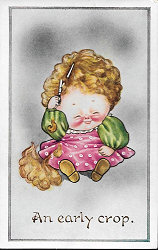 An early crop |
His First Pair |
Shan't Play ! |
||||||||||||||||||||||||
|
I wonder what father uses this for. 9 July 1910 |
Would you like one of these? 1910 |
You can't do this girls
|
Fly with me darling |
Lady Audley's Secret 1912 |
||||||||||||||||||||||||
| Fashionable Ladies Series - artist unknown | ||||||||||||||||||||||||||||
|
||||||||||||||||||||||||||||
|
||||||||||||||||||||||||||||
| From The British Newspaper Archive | ||||||||||||||||||||||||||||
|
||||||||||||||||||||||||||||

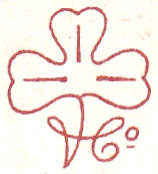 In
1906 Felix McGlennon established the company "Shamrock & Co" at 5 Lovells
Court, Paternoster Row, and applied for a trademark showing a
Shamrock. In October 1908 the trademark was refused, after a court
case, in which it was claimed that the use of a shamrock improperly
suggested the cards were made in Ireland (see below). From about 1910 cards were
published by Felix McGlennon Ltd. "Incorporating Shamrock & Co"
In
1906 Felix McGlennon established the company "Shamrock & Co" at 5 Lovells
Court, Paternoster Row, and applied for a trademark showing a
Shamrock. In October 1908 the trademark was refused, after a court
case, in which it was claimed that the use of a shamrock improperly
suggested the cards were made in Ireland (see below). From about 1910 cards were
published by Felix McGlennon Ltd. "Incorporating Shamrock & Co"
